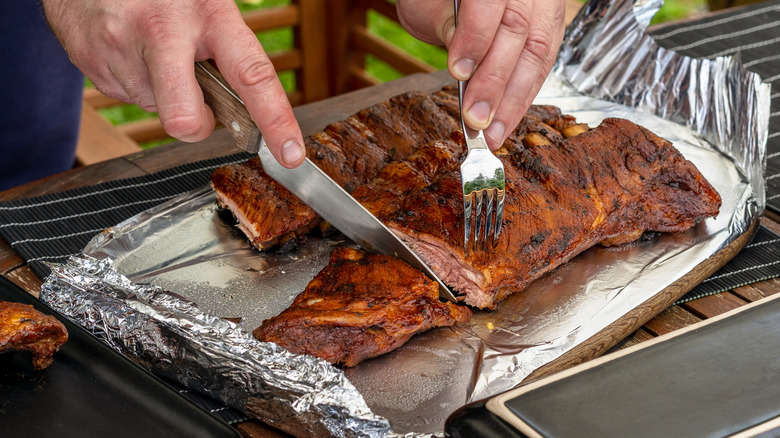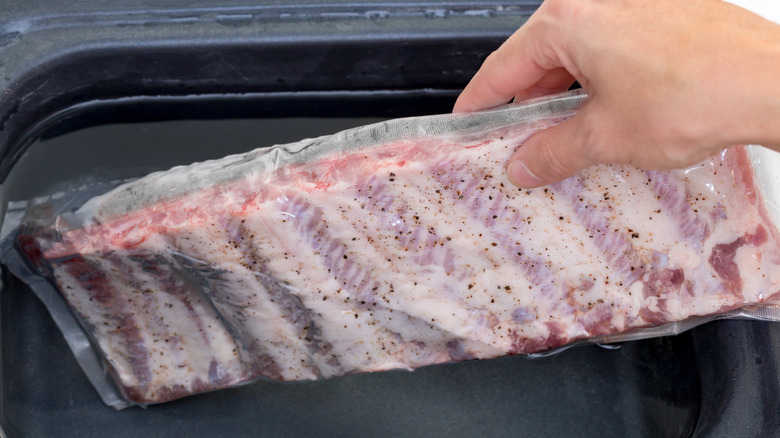The Best Way To Reheat Your Barbecue Pork For Juicy And Flavorful Results
You've just grilled pork spare ribs or baby back ribs to perfection, but you're not quite ready to serve and plan to reheat the barbecue pork later. To retain the cooked pork's flavor and juiciness, Chris Stark, Director of Culinary Operations at Hill Country Barbecue Market shared a simple method with Tasting Table. Stark is participating on October 29 in City Harvest BID 2024: CHTV!, an annual charitable event for raising funds to feed struggling families.
Stark explained, "Depending on the amount of time between the time the meat has reached its desired internal temperature, and the time you plan to serve it, two options take the field." First, if your pork is done but you're not serving it for a few hours, Stark advises wrapping it in tin foil after it's rested. The USDA states that pork ribs are safe to eat at an internal temperature of 145 degrees Fahrenheit with a rest period of three minutes.
Barbecue experts aim more for 190-205 degrees Fahrenheit (which you can accurately monitor with a meat thermometer), and resting the pork for at least 10 minutes is essential for allowing the meat to reabsorb its juices. Wrapping the rested pork in doubled heavy-duty foil helps the meat retain its heat to make it easier to reheat a little bit later on. Until you're ready to quickly reheat the pork on the grill, Stark recommends, "Store it in an appropriately sized cooler."
Sous vide barbecue pork is easy to reheat on the grill
Stark also told us about another important consideration to note. "If [the pork is] not rested for long enough, the risk of overcooking, by way of internal heat carrying over, is too great to chance." Carryover heat — in which the internal temperature of the meat rises as its exterior decreases in temperature — can often be the culprit for dry meat. So it's better to slightly undercook meats when grilling. Pork ribs, in particular, are prone to overcooking because of the varying thickness of the meat between different types of ribs.
Storing the foil-wrapped pork in a cooler is a great option for when you're serving a short period after cooking. But if you're not serving until many hours later, Stark says, "There is no technique more effective than using a sous-vide method." The beauty of sous-vide cooking is that the internal temperature of the vacuumed-sealed meat won't go above the sous-vide unit's set temperature for the water bath.
Although it can take 12 to 36 hours to sous vide barbecued pork ribs (meaty spare ribs take the longest), it's all hands-off time. The low temperatures (145-165 degrees Fahrenheit) ensure moist and tender meat that can be finished off and charred on the grill minutes before serving. Whichever of Stark's methods you choose, either will keep your barbecued pork hot, juicy, and flavorful right up to when everyone sits at the table.

